JSON Web Tokens (JWT)
Abbreviations
*[APIs]: Application Programming Interfaces
*[CORS]: Cross-Origin Resource Sharing
*[HTML]: HyperText Markup Language
*[HTTP]: Hypertext Transfer Protocol
*[JWT]: JSON Web Token
*[SAML]: Security Assertion Markup Language Tokens
*[SWT]: Simple Web Tokens
What is JWT
just for authorization only not authentication
authentication takes in a username and password and make sure the username and password are correct (i.e., logging a user in)
authorization making sure the user sending requests to your server is the same user that logged in during an authentication process (i.e., should this user be consuming this resource)
normally done using Sessions
JWT vs Session
Session-based authentication
In session-based authentication, the user logs in from a client (by posting an email and password to a client), and the server does the authentication. If this is correct, the user is stored in the session, and the session is stored in memory on the server. The ID is then sent back to the browser using a cookie that sends the ID up to the server each time it makes a request.
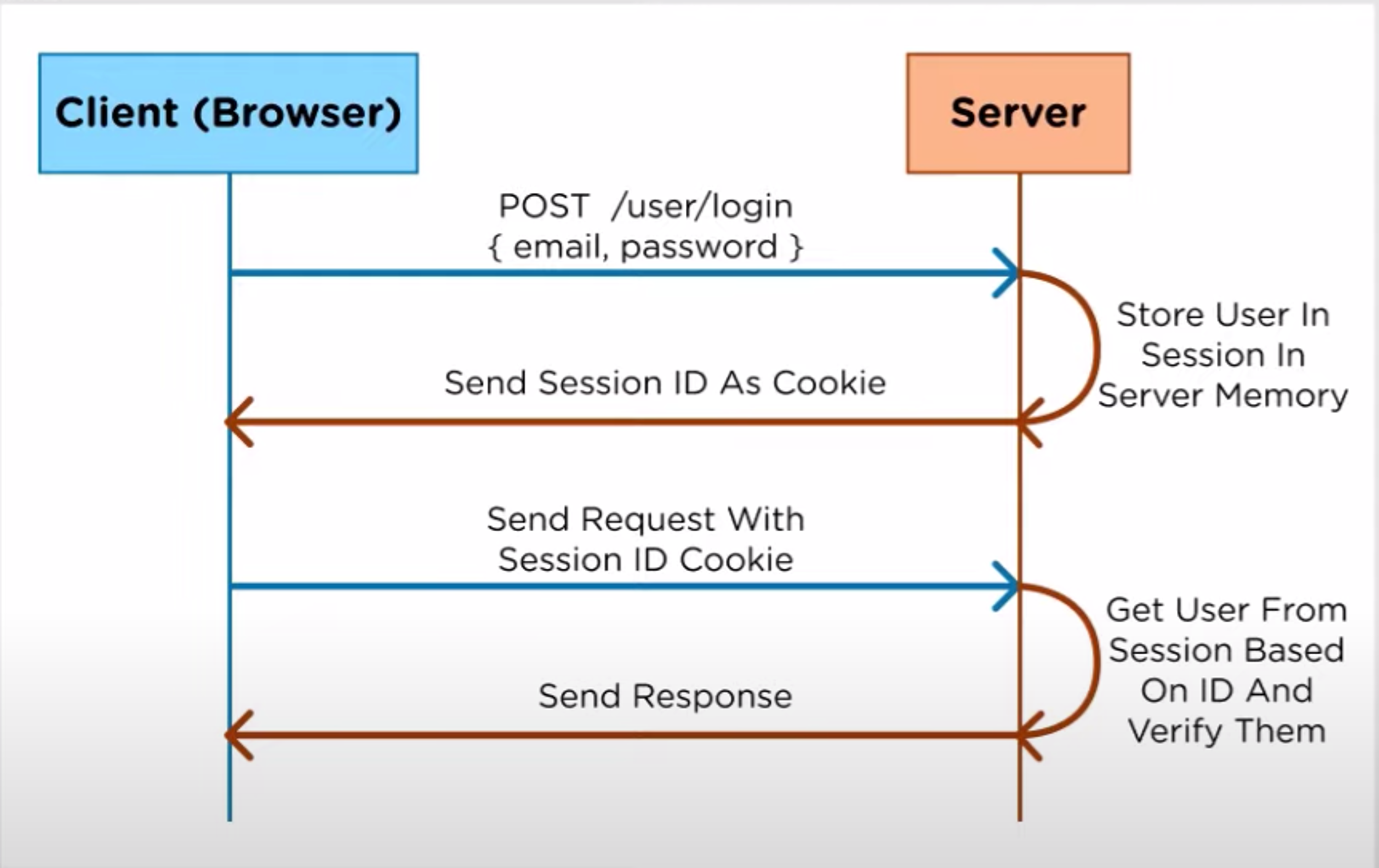
Token-based authentication
In token based authentication, JWT creates a JSON web token and encodes, sterilizes, and adds a signature with a secret key that cannot be messed with. The key is sent back to the browser. Each time a request is sent, it verifies and sends the response back.
The main difference here is that the user's state is not stored on the sever as in a session based, instead it is stored inside the token on the client-side.
JWT also allows us to use the same JSON web token in multiple servers that you can run without running into problems where one server has a certain session, and the other doesn't.
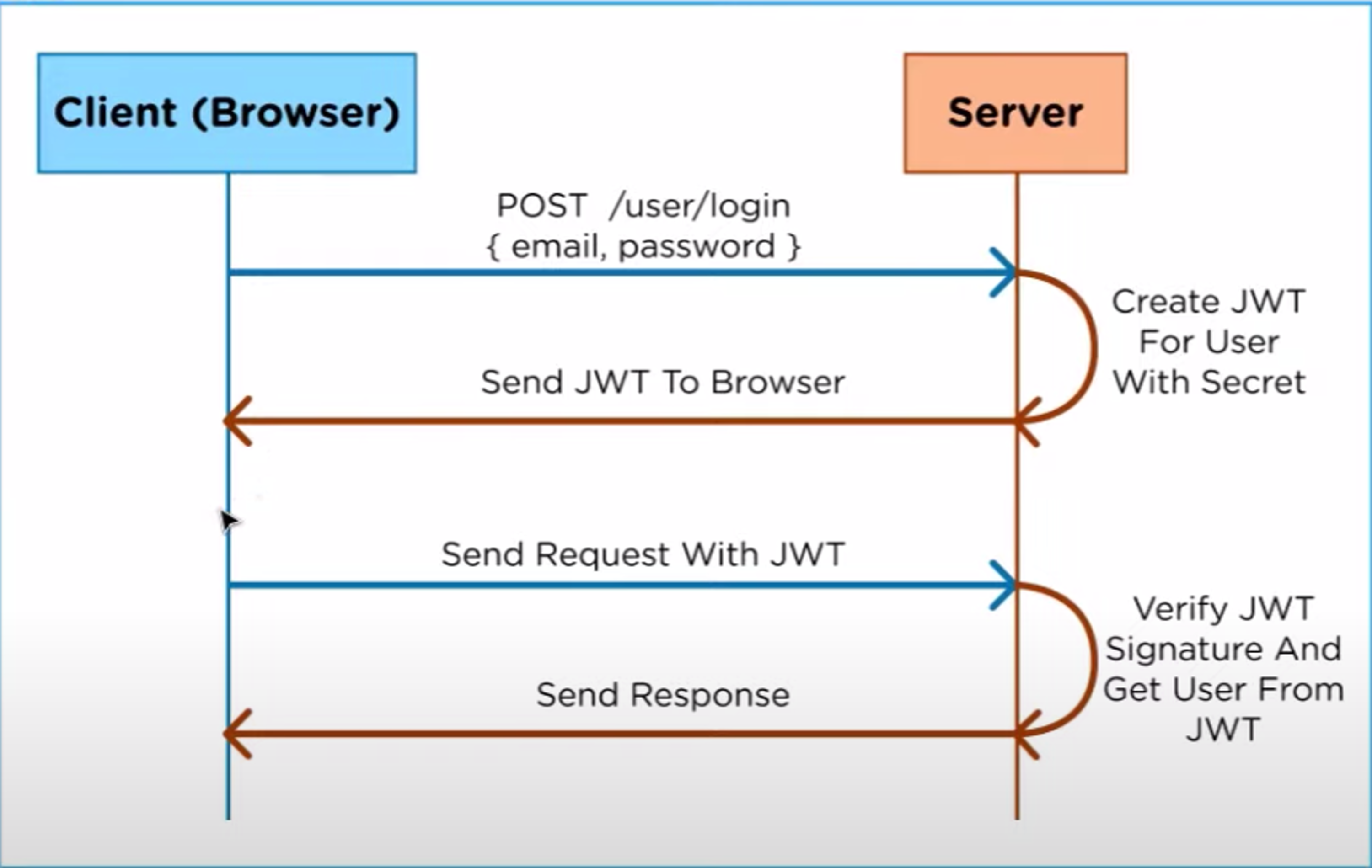
Components of JWT
Go to JWT.io debugger to see how a JSON web token is constructed.
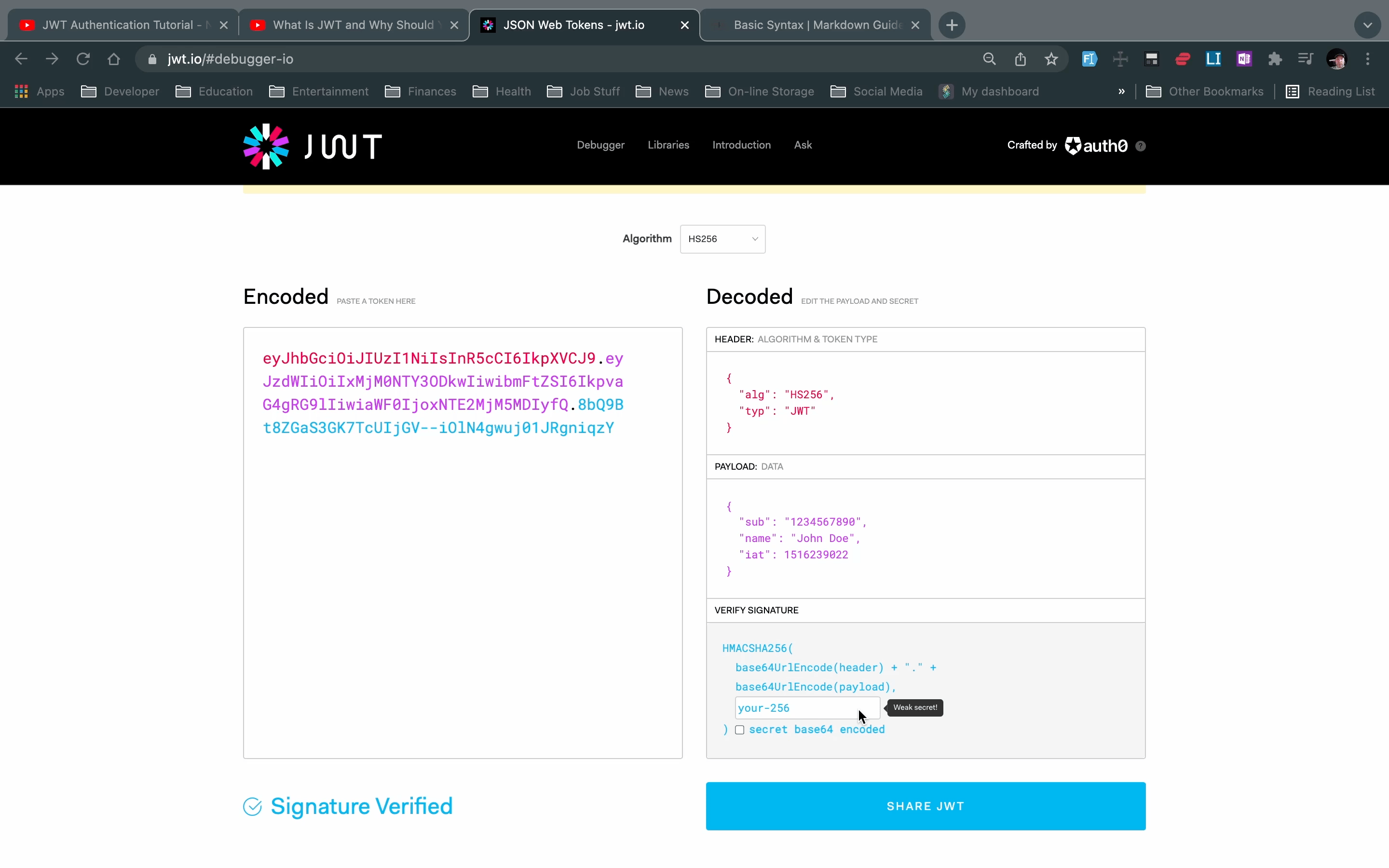
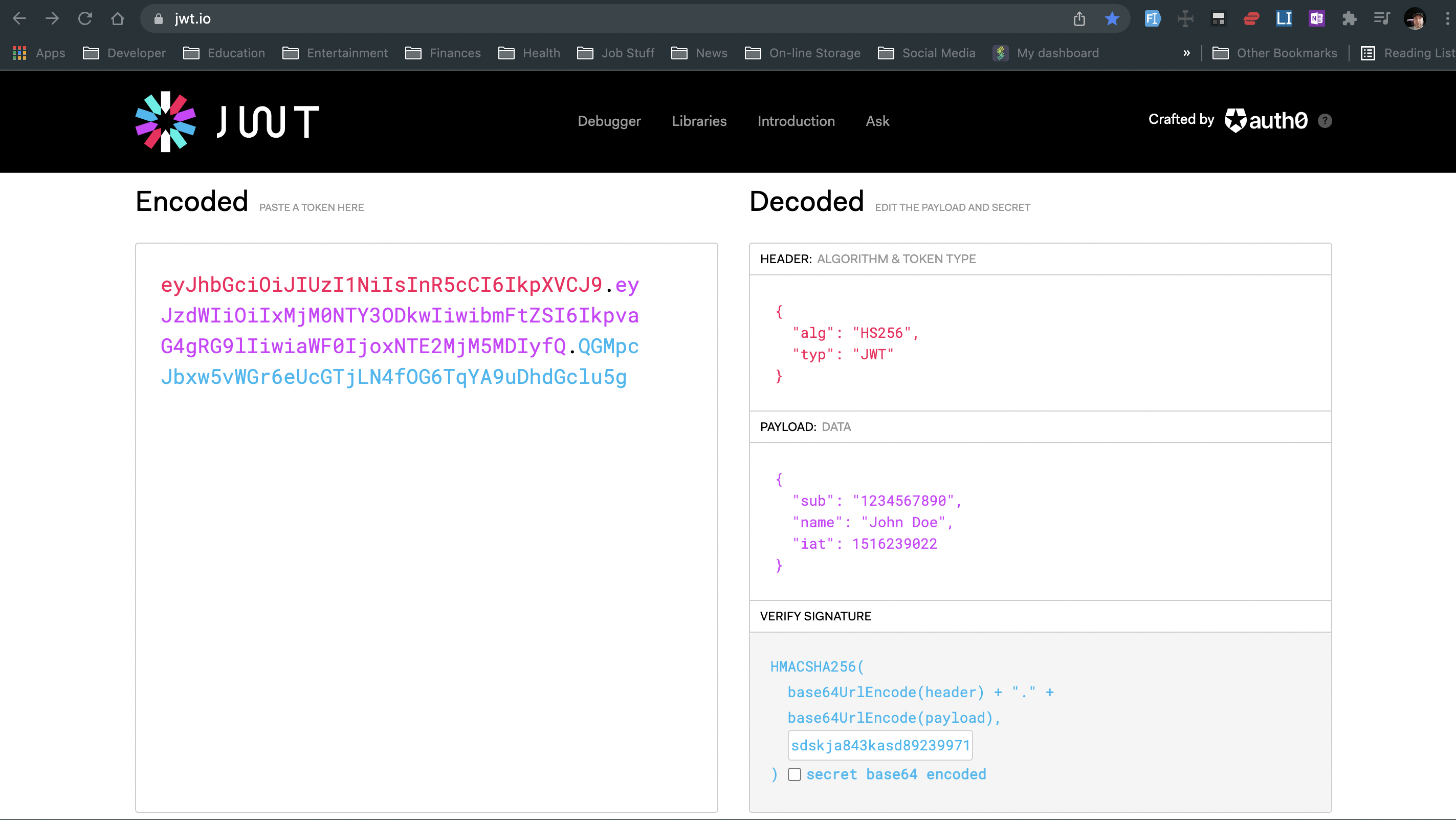
A typical JWT xxxxxxx.yyyyyyyyyyy.zzzzzzzzz
HEADER (xxxxxxx)
this contains the signing algorithm and token type
PAYLOAD (yyyyyyyyyyy)
contains the claims
claims are statements about an object (typically, the user) and additional data
3 types of claims
Registered claims: set of predefined claims which are not mandatory but recommended (iss - issuer, **exp **- expiration time, sub - subject, aud - audience and others)
Public claims: defined at will by those using JWTs
Private claims: custom claims created to share information between parties that agree on using them and are neither registered or public claims.
Should always make sure you have an expired date on a token. Otherwise, a bad player should ever get a hold of your token then they could make requests as you and never worry about it expiring and denying them access.
NOTE: signed tokens although protected against tampering can still be read by anyone. They are encoded but not encrypted. Therefore, you should NEVER send user passwords in a JWT token.
SIGNATURE (zzzzzzzzz)
to create the signature part, you have to take the encoded header, the encoded payload, a secret, the algorithm specified in the header, and sign that.
used to verify the message wasn't changed along the way, and, in the case of tokens signed with a private key, it can also verify that the sender of the JWT is who it says it is.
The output is three BASE64-URL strings separated by dots that can easily be passed in HTML and HTTP environments
When you should use JWT
Use JWTs when a stateless authorization mechanism is needed. The server's protected routes will check for a valid JWT in the Authorization header, and if it's present, the user will be allowed to access protected resources. If the JWT contains the necessary data, the need to query the database for certain operations may be reduced, though this may not always be the case.
If the token is sent in the Authorization header, Cross-Origin Resource Sharing (CORS) won't be an issue as it doesn't use cookies.
The following diagram shows how a JWT is obtained and used to access APIs or resources:
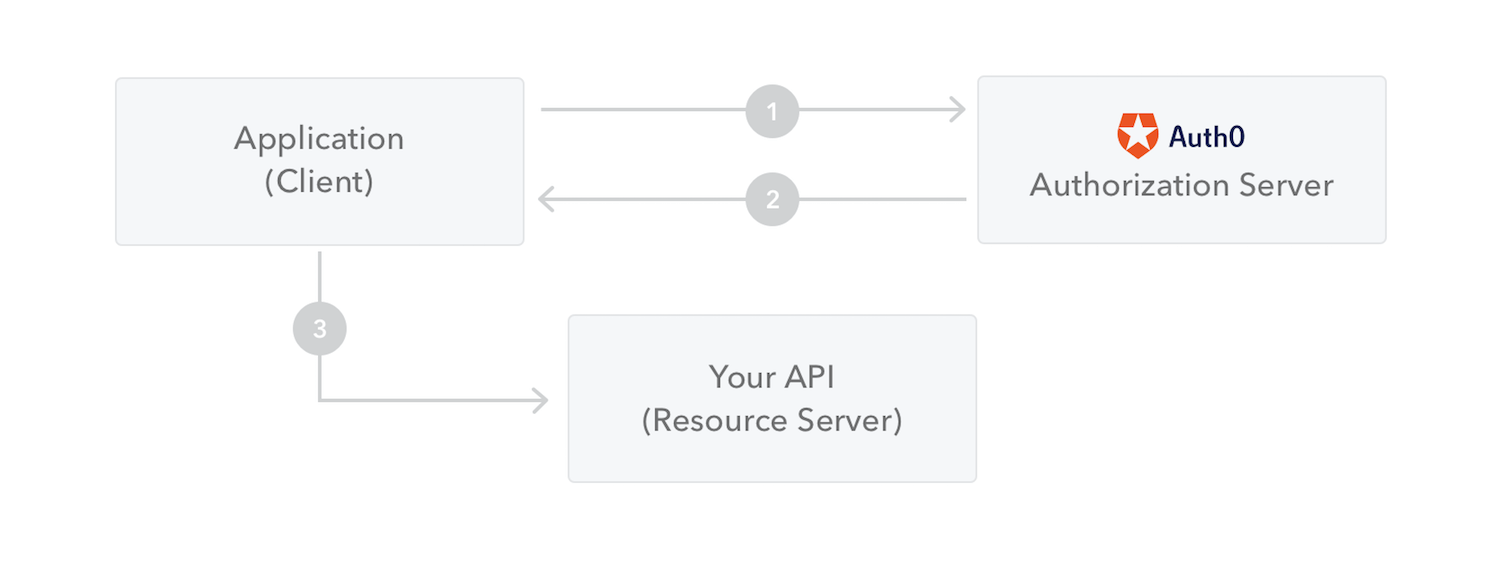
The application or client requests authorization to the authorization server. This is performed through one of the different authorization flows. For example, a typical OpenID Connect compliant web application will go through the
/oauth/authorizeendpoint using the authorization code flow.When the authorization is granted, the authorization server returns an access token to the application.
The application uses the access token to access a protected resource (like an API).
The advantages of JWT
JWT presents several benefits over Simple Web Tokens (SWT) and Security Assertion Markup Language Tokens (SAML).
less verbose than XML and more compact than SAML
security-wise, SWT can only be symmetrically signed by a shared secret using the HMAC algorithm. However, JWT and SAML tokens can use a public/private key pair in the form of an X.509 certificate for signing. Signing XML with XML Digital Signature without introducing obscure security holes is challenging when compared to the simplicity of signing JSON.
JSON parsers are common in most programming languages because they map directly to objects. Conversely, XML doesn't have a natural document-to-object mapping. This makes it easier to work with JWT than SAML assertions.
regarding usage, JWT is used at an Internet scale. This highlights the ease of client-side processing of the JSON Web token on multiple platforms, especially mobile.
More about JWT can be found at Auth0.
Glossary
A definition list or a glossary:
- First Term
This is the definition of the first term.
- Second Term
This is the definition of the second term.
